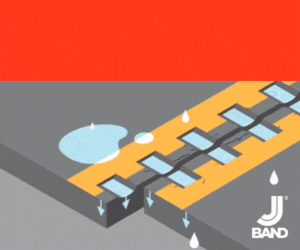
The first step toward a good solution is a good diagnostic. And, in a technical field like road paving, there is no good diagnostic without objective and statistically sound evidence. It seems that Traffic Speed Deflectometry (TSD) provides both.
For researchers in the road-paving field, who sometimes have to draw conclusions on sparse samples and bear the pressure from DOTs to minimize traffic disruptions, TSD may be a good solution. TSD allows taking samples of significant size that clearly represent the pavement under study without being an obstacle on the already congested American roads.
In a nutshell, TSD measures the pavement deflection velocity using a set of velocity-sensing lasers based on the Doppler principle. A known load on a trailer travels at about 50 mph, and a “measurement beam” inside the trailer records the deflection slopes of the pavement. Other variables are also measured several times per minute: the vertical and horizontal vehicle suspension velocity, truck speed, truck position, temperature of the air, and temperature of the road. With all these variables, and using a fine-tuned calibrated model, the TSD software can determine structural strength of the pavement.
The promoters of this technology claim to offer several advantages. For starters, a vast quantity of data can be collected in a very short time. TSD trucks can survey 300 miles of road per day. For example, the Australian states of New South Wales and Queensland contracted a TSD trailer to measure the bearing capacity of more than 11,000 miles of roads.
Secondly, unlike other methods, the data does not depend on who collects it and TSD recordings have proven to be highly repeatable. An early independent evaluation conducted by the Laboratoire Central des Ponts et Chaussees (LCPC) in Paris, France in 2003 showed that, even though the early prototype had limitations, it demonstrated ideal repeatability in the short term and a quality degree of correlation with other methods.
Third, TSD trucks are non-intrusive measurement devices and do not cause traffic disruptions. Before the introduction of TSD, the standard method for deflection measurements was the falling weight deflectometer (FWD), a device that requires traffic control and measures deflections while stationary at discrete locations along the pavement structure. The FWD has proven to be an important tool in the non-destructive evaluation of existing pavements, and many state and local pavement management systems utilize the measurements from the FWD. However, the TSD, unlike the FWD, does not require roads to be closed to perform the measurement (but, if you ever find yourself behind one of these trucks be patient or move to another lane because these trucks rarely change speed or lanes).
And last, but not least, TSD detects premature problems deep down under the surface that may take years to be exposed to visual inspection.
This technology was developed and patented by Greenwood Engineering, an engineering firm out of Denmark during the 2000s. From 2009 until 2014, Greenwood Engineering sold TSD units in different countries: Denmark, Australia, New Zealand, UK, Italy, Poland, South Africa, China and the U.S.
The unit in the U.S. is used in comparison tests arranged by the Federal Highway Administration. In mid 2013, the Federal Highway Administration Research and Technology department started a 3-year project (“Demonstration of Network Level Pavement Structural Evaluation with Traffic Speed Deflectometer”) with the intention of, according to the FHWA, “Assess the feasibility of and demonstrate the use of Traffic Speed Deflectometer (TSD) for network-level pavement structural evaluation for use in the participating agencies pavement management application and decision making.” The final report of this study is imminent.
Like any other sophisticated piece of equipment, TSD is not cheap. The equipment cost is 3 million dollars and this does not include the integration and commissioning of the system. Also, TSD is a complex system and requires skillful operators to handle it.
According to Kathy Doukouris, Business Manager at ARRB group (a purchaser of TSD equipment) “It has more components than what the people may think. It looks like we are purchasing a big truck but it is more complicated than that; it was very challenging.”
But DOTs must continue exploring more efficient methods to maximize the return of tax dollars in road maintenance. And the future conditions will get more demanding: according to official forecasts, the number of cars in the U.S .will grow 6 percent per decade in the next 50 years. Efficient, fast, and precise methods must be developed. In an era of self-driving cars and super intelligent routing systems, TSD may be the way to go.
Fritschy is the CEO of Avista Oil in Georgia.













